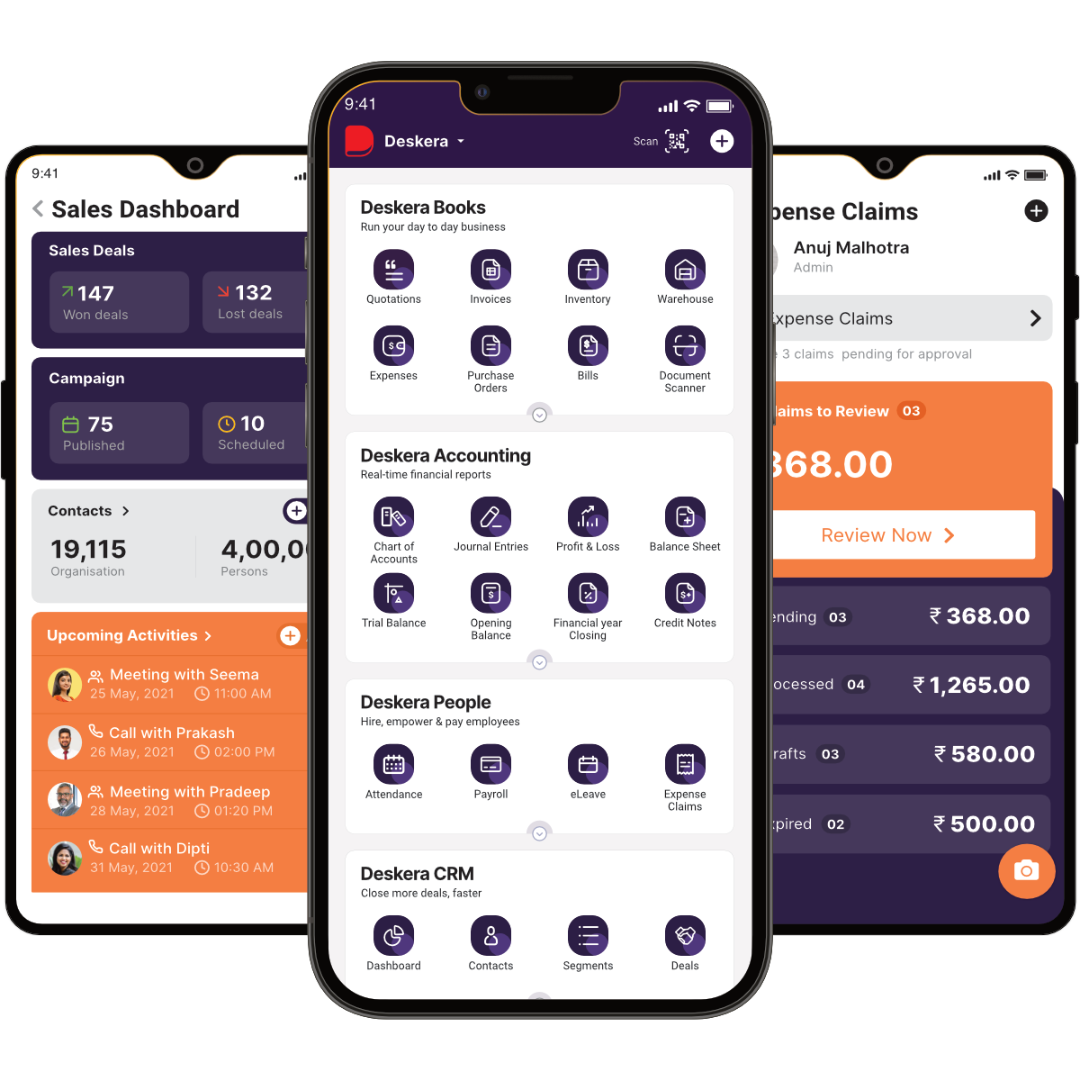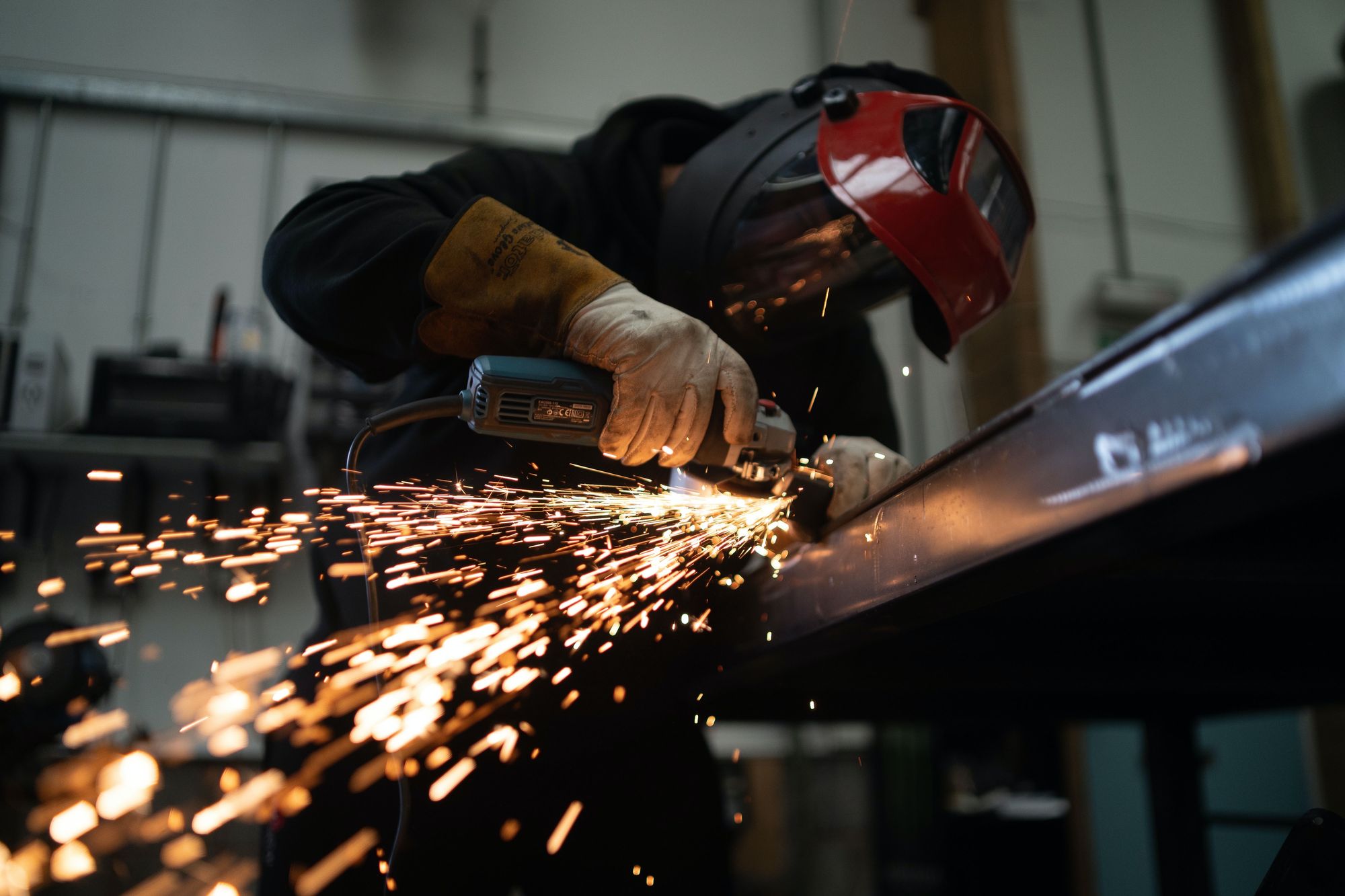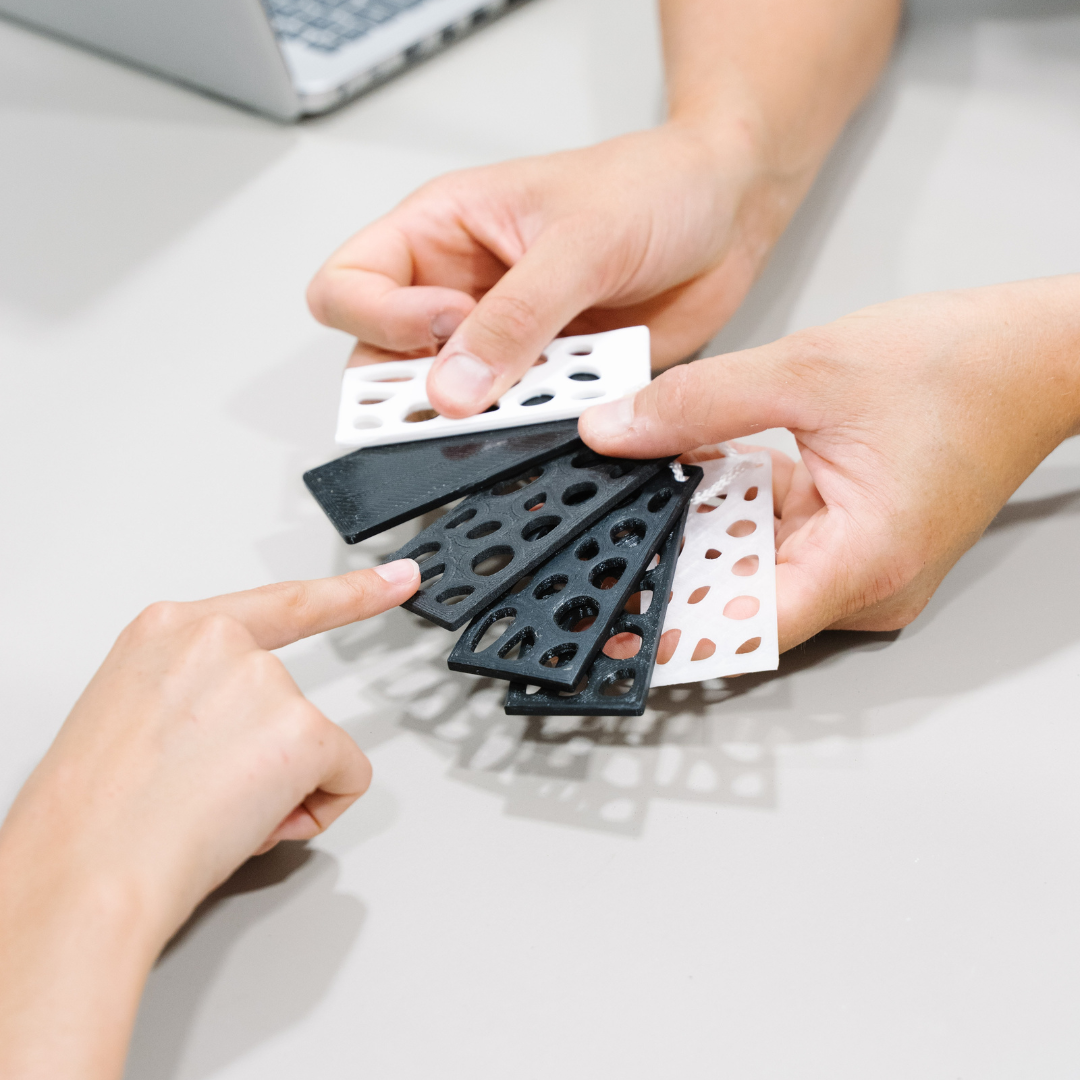If you are a manufacturer who produces custom-made products, then you certainly know about ETO.
Engineer-to-order (ETO) is a manufacturing method. It begins when the company gets orders for custom-made components. Manufacturers outline the design, engineer, and produce the unique items from start to finish for consumers.
Customers collaborate and work alongside the manufacturing team. This helps them achieve the intended end result during ETO. Furthermore, ETO is commonly used in the creation of sophisticated and one-of-a-kind products. Improvised vehicles, telephones, mechanics, and industrial cranes are examples of this.
It is widely used in areas such as aerospace, military, and farming. Some other sectors are information technology and chemical energy industries.
This post covers all the relevant facts and concepts associated with ETO. Let’s see what we shall learn:
- What is Engineer-to-Order (ETO)?
- ETO Manufacturing Process
- 4 Best Practices for ETO
- Benefits of ETO
- Disadvantages of ETO
- Examples of ETO
- 5 Challenges with ETO
- Why do You Need ERP for ETO?
- ETO FAQs
- Conclusion
- How can Deskera Help You?
- Key Takeaways
- Related Articles
What is Engineer-to-Order (ETO)?
Engineer-to-order (ETO) manufacturing entails creating a product to a customer's precise specifications. ETO procedures necessitate adaptable, demand-driven manufacturing methods. The ETO model can enhance sales and margins for businesses working with consumers who want customization.
It tends to be a more expensive manufacturing procedure. This is because ETO allows clients to tailor products to their individual demands. Thus, taking longer for the entire product cycle to complete. It also enables producers to create smaller goods, which are useful specialized applications.
It is quite different from traditional manufacturing in a number of ways.
ETO Manufacturing Process
An ETO process includes extra steps that necessitate detailed quoting. Also, companies need to employ meticulous engineering for sales and product design.
ETO also necessitates an accurate change management system throughout the manufacturing process. It must also have ongoing cost monitoring and assessment. This ensures that existing production conditions are in line with the quoted cost structure.
Let’s look at what ETO manufacturing typically comprises. The following are the basic ETO workflow steps:
Sales Engineering
A ‘Request for Quote’ or an RFQ is typically the first step in an Engineer-to-Order production process. A customer describes the deliverables as well as the desired functionality of the finished product. They also provide the exact requirements that the product must fulfill.
After receiving the RFQ, sales employees collaborate with product engineers and managers. Following a discussion on the same, they move ahead to provide a quote that matches the client's requirements.
These quotes are provided keeping in mind the organization’s profit targets also. This process involves a large number of iterations. The process continues until the intended product configuration gets an approval.
Process Planning
Unlike Make-to-Stock (MTS) manufacturing, Engineer-to-Order manufacturing is unique on a per-product basis. There could be instances where a firm makes versions of a basic product with customized parts. Alternatively, each product may require a new production method or line. As a result, process planning is not clear.
To move ahead in the process, this must be clearly defined and adaptable. Having accurate process planning allows the manufacturer to stay within its production capabilities. They are also better positioned to control budget and operational expenses.
There are various factors that are integral to process planning. These include:
- Documentation of the design
- Sourcing and procurement of parts and components
- Manufacturing schedules
- Major or minor tooling requirements
- Associated costs
Besides these, the companies must implement well-documented change management procedure. It must also have specified approval and cost methods for changes along the route.
Inventory Management
ETO products require specialized and dedicated components that are not interchangeable with other goods. This makes inventory management extremely critical here. Accurate inventory management helps prevent specialized parts from the wrong application. Efficient handling of inventory also ensures keeping the production schedule on track.
Thus, inventory management becomes an important step in the ETO manufacturing.
Manufacturing
We know that there are high volumes of identical goods and production runs in an MTS system. This kind of system enables more data points, ensuring more exact costing. Furthermore, it leads to an accurate grasp of variables such as labor, waste, and stocktake time.
Now, the fact that each ETO product is a fresh product increases the possibility of unknown factors. Thus, there is an increased necessity to have accurate and dynamic BOMs and automated production scheduling. Additionally, labor and shop floor management also become crucial in such manufacturing. Since, it is a new product every time, the related processes also need to be customized.
The process could get more challenging if there are change orders are issued. These change orders may need modifications in production line processes. There could be one or more locations affected on the factory floor.
All the above steps must be taken with care in ETO. The manufacturing business must be cautious at each step. Since the products will be new every time, they must ascertain all loopholes are covered.
4 Best Practices for ETO
While ETO production might be very challenging. However, there are certain methods that can be implemented to make the process more manageable. The following are the recommended practices for Engineer-to-Order production:
Establish Efficient Communication Channels
ETO production involves significantly greater customer involvement than MTS or MTO. Thus, it requires open and transparent communication with the client. All the involved teams, such as those of engineers, sales, procurement, and manufacturing, must align with a common outcome.
The employees in these teams will need to interact frequently. This is because the production requirements demand many revisions and changes during the process.
Reconcile Engineering and Manufacturing Capability
In the ETO process, the product outline could be new or maybe in the process of development for a specific end-use. Therefore, product design within an ETO environment can be highly creative. This calls for the manufacturing and engineering teams to collaborate closely. They must come together to reconcile engineering requirements with production capabilities.
They can make use of tools and applications that help them achieve this. Checklists are a good way to ensure all the important points have been included. Moreover, this will help them narrow down the company's inherent capabilities.
Unlike how it is usually perceived, this has no bearing on creativity. Rather, it helps the manufacturer understand how the product fits into its current manufacturing capabilities. The manufacturers get a better idea of how to effectively arrange their Bill of Materials (BOMs) and costs.
Focus on Accurate Documentation
We are aware that the ETO process produces a one-of-a-kind product. Thus, it carries additional obligations in the form of safety requirements and regulations. It is vital to have accurate documentation from the beginning to the completion of the process.
There are various components that are needed for creating accurate documentation. Comprehensive documentation will require consistent part numbering, accurate BOMs, and precise cost models. Additionally, precise inventory management also contributes to having robust documentation.
Automation System Deployment
Companies need to be efficient with cost and waste management. They must also ensure a sturdy workflow in place. These are essential for good sales experience, engineering, and skilled production work.
Today's global manufacturing environment has dispersed supply chains. Therefore, a manufacturing unit has to rely on advanced tools. With the proven efficacy of Material Requirements Planning (MRP) and Enterprise Resource Planning (ERP), companies can drive better outcomes. The level of automation provided by these systems helps control the production flow.
Read our Complete Guide on MRP Here
Furthermore, there are diverse advantages to implementing MRP and ERP. The following list presents the areas where an ERP system can simplify things:
- Accounting and Finance
- Supply chain management
- Customer relationship management
- Human resources
- Inventory management
Since these systems offer automation, manufacturers can save a lot of time spent on manual activities. Repeated and redundant tasks can be automated. This gives the staff much more time to focus on their core functional areas.
Manually managing an MTS or MTO environment is challenging enough without systemization. However, doing so for Engineer-to-Order production is nearly impossible.
Benefits of ETO
Engineer-to-Order goods have various advantages over off-the-shelf alternatives. Let’s see what they are:
Customized Goods
Customized products are gaining popularity in today's global production climate. ETO enables producers to create products that are individually suited to the needs of the customer. This can include features, dimensions, and even colors that are not accessible in standard items. In other words, there are a lot of customizations available to customers.
Often, the products demanded by customers are not available in a custom size or shape. With ETO, this problem is ruled out.
Target Market Segments
Small quantities of products are critical in niche markets. Such markets have insufficient demand to justify producing big volumes. ETO enables firms to produce lower quantities of products. This way, they can venture into these markets.
A custom cabinet firm may use ETO to build a limited number of cabinets in various colors and styles.
Manufacturing Small Amounts is Possible
ETO enables businesses to make smaller quantities of products. This becomes useful in niche markets or places of specialized applications. Furthermore, it aids in the reduction of inventory costs.
There are companies that manufacture only small parts or components on a per-order basis. They could deploy the ETO technique. ETO could be used by a company that creates custom parts to produce limited quantities of components that are not available easily.
Disadvantages of ETO
The process of ETO can be more complicated than typical manufacturing methods. It necessitates specific knowledge and abilities. Moreover, product quality can be more difficult to ensure. The team may find it challenging to conduct product validation and testing. While these are critical to the process, there may be obstacles on the path.
Another drawback of the process is that customer participation is critical. Without them, the process would not take off at all.
The following are the primary drawbacks of Engineer to Order manufacturing:
Rising Costs
For starters, making bespoke products can be more costly than producing regular products. It takes longer and requires more resources to produce a design that matches the specific needs of the consumer.
Companies need more time to produce a different design for each customer. A company that makes bespoke cabinets may have to invest more time and money in research and development. This essentially raises the cost of the manufactured product.
Increased Lead Times
Engineer-to-Order items often have lengthier lead times than off-the-shelf items. This is due to the time it takes to receive the order and verify material availability. Furthermore, generating the BoMs and arranging the manufacturing order also takes time.
A bespoke cabinet manufacturer may require up to two weeks to complete the cabinets.
Limited Availability
Due to restricted production capacities, customized items are not always accessible. This can result in backorders and dissatisfied customers.
Engineering and Production Capabilities
ETO necessitates proven firm engineering and production skills. This can be difficult for businesses that do not have in-house resources. This problem is common for medical supplies manufacturers. A company that creates unique medical equipment may need to collaborate with another company to complete the product.
Restricted Options
Engineering-to-Order products typically have a limited selection. This is due to the fact that products are not based on standard inventory and require more time to plan and create. A custom medical equipment manufacturer may only offer a few different products.
Heightened Collaboration Required
This endeavor necessitates a great deal of collaboration among several groups. Engineers, product makers, and salespeople, for example, will all need to collaborate to make this happen. To be effective, a high level of standardization is required. It might not be appropriate for all products or applications. Companies need a significant level of commitment and investment if they want to be successful with the ETO process.
Examples of ETO
Today, we can spot ETO products in almost every sector. Fundamentally, there is a growing desire to provide personalized or ETO products.
Let’s walk through some examples here:
- Commercial HVAC equipment
- Electrical switchgear
- Power plant boilers
- Industrial cranes
- Aerospace manufacturing
- Defense and security industry
- Energy industry
5 Challenges with ETO
While there are benefits of ETO, there is a downside to it as well. All industries face certain challenges. The ETO manufacturers are no exception. Let's look at some of the complications ETO products add to the sales process.
- Unrecognized Pricing: We are aware that in the ETO process, the product has not yet been fully engineered. So, the pricing, lead times, and technical product data regarding the solution are all unknown. Other significant aspects, such as performance statistics and drawings, are yet unrecognized.
- Meeting Deadlines: When an RFP arrives, almost everything needed to deliver a proposal is unavailable. The manufacturing unit has to cope with the fast-approaching RFP deadline. Engineering must so be involved in order to translate the client's requirements into a solution.
- Reliable assessment of lead time: Additionally, the solutions must be reliably assessed in terms of cost, lead time, and risk. This process creates a stumbling block in delivering a quote and getting the contract.
- Eroding profit margins: Due to a lack of clarity, companies may face a time crunch. There may be little to no time to build a thorough enough design within the allotted proposal response period. Such estimate can be misleading and frequently introduces guesswork and erode profit margins.
- Risk of losing the project: To mitigate the risk of margin reduction, corporations generally include a reserve in the given price and lead time. However, putting too much buffer time in the pricing or lead time can cost them the project.
If they do not have enough time, they might not be able to make a profit on the task. When dealing with expensive capital equipment, this contingency dilemma becomes a steep game of informed guesses. All these elements could be detrimental to the manufacturing company.
Why do You Need ERP for ETO?
Global sales channels account for 50% of all ETO products made. A solid cloud-based ERP solution is required to manage the unique and customized attributes of ETO products. Customers' bulk customization can further complicate the procedure. ERP can help to accelerate the process. It can also assist manufacturers who require a higher level of customization.
ETO goods account for a significant portion of capital and consumer goods produced. There is a need to speed up and refine the process as clients' tastes become more refined. The demand for speedier rollouts and shorter lead times puts pressure on ETO product manufacturers.
Many of these systems facilitate a direct transfer of newly engineered goods via API connections or CSV upload. This reduces many manual stages and automates a significant portion of the process.
With precise BOMs, a plant may leverage its ERP to develop cost functionality. They may connect it to finance departments. The manufacturing department now has access to up-to-date and reliable data that can be utilized for labor planning. Additionally, they can also carry out inventory management and shop floor control. All these processes help to keep costs under control and idle time to a minimum.
To summarize, here is how an ERP system can benefit ETO manufacturers:
- Manage the unique and customized attributes of ETO products
- Eliminate manual tasks through automation
- Help track various manufacturing activities through a single dashboard
- Bring the finance team, manufacturing staff, and sales teams on the same page
- Develop accurate cost functionality
- Track process through real-time updates
- Accelerate the manufacturing process
While ETO can be difficult for any business, a solid cloud-based ERP system will be helpful. It enables all of the aforementioned best practices to be implemented inside the manufacturing unit. It refines the process to produce ETO goods with the appropriate profit margins and the minimal waste.
ETO FAQs
Let’s take a look at some most frequently asked questions on ETO.
Q: What are the differences between MTO and ETO?
A: MTO is an abbreviation meaning – Make to Order. The fundamental difference between MTO and ETO is complexity. Companies that employ an MTO manufacturing process often have a standardized product that consumers can personalize in many ways. This could include size variations or aesthetic elements. When a consumer places an order, production can begin immediately using current designs from the company.
ETO manufacturing expands on that idea. Customers can buy custom options that are tailored to their specifications. Production necessitates a lengthy lead time to allow the producer to engineer the particular product and carry out production.
Q: Is there anything I need to know or have particular abilities to use Engineer-to-Order?
A: Yes, professional manufacturing work can make the ETO process easier. This method is more difficult than typical manufacturing processes. It requires exceptional abilities to handle the process at each stage. From design to costing, everything needs to be managed meticulously.
Q: Is Engineer-to-Order offered by all manufacturers?
A: No, not every manufacturer provides Engineer-to-Order items. One must verify with the manufacturer to determine if they offer this service.
Q: Can Engineer-to-Order be used for all of my products?
A: No. You may not use it for all your items. Before you set pricing, you should have a good knowledge of what you are selling. It may not be suitable for mass-produced products with a limited life cycle. Its suitability for a particular product is determined by numerous aspects. This includes the customer's wants and the product's complexity.
Conclusion
ETO is a method that combines engineering and production. The product is intended to suit the needs of the customer. The definition of Engineer-to-Order, the process flow, and best practices were all covered in this blog post.
The customer submits detailed requirements for the product they require. The engineering team comes up with a design that fits those requirements. Before the design is sent to manufacturing, the customer must approve it. The production team is responsible for producing the finished product in accordance with the approved design.
The goods are inspected before being shipped to the consumer. The consumer submits product feedback to help enhance future designs. The engineer revises the design to fulfill the customer's requirements.
How can Deskera Help You?
You must maintain track of your inventory stock as a manufacturer. The state of your inventory has a direct impact on production planning, the usage of people and machinery, and demand forecasting.
Deskera ERP and MRP solutions can help you with the following:
- Plan production schedules
- Create a Bill of Materials.
- Create detailed reports
- Design your own dashboard

Deskera ERP is a comprehensive system for managing suppliers, tracking supply chain activity in real time, and streamlining a variety of other organizational functions.
Deskera Books enables you to better manage your accounts and finances. It aids in the maintenance of sound accounting practices by automating billing, invoicing, and payment processing activities.
Deskera CRM is a strong solution that helps you organize your sales and finish deals quickly. It allows you to do critical tasks such as lead generation via email and provides you with a detailed snapshot of your sales funnel.
Deskera People is a simple application for centralizing human resource management tasks. Not only does technology speed up payroll processing, but it also assists you with other activities such as overtime, benefits, bonuses, training programs, and much more.
Key Takeaways
- Engineer-to-order (ETO) is a manufacturing method. It begins when the company gets orders for custom-made components.
- Engineer-to-order (ETO) manufacturing entails creating a product to a customer's precise specifications.
- ETO tends to be a more expensive manufacturing procedure. This is because ETO allows clients to tailor products to their individual demands.
- An ETO process includes extra steps that necessitate detailed quoting. Also, companies need to employ meticulous engineering for sales and product design.
- Sales engineering, process planning, inventory management, and manufacturing are the steps in the ETO workflow.
- Companies need to follow best practices in ETO. These include having effective communication channels, focusing on clear documentation, and automating their processes.
- Having customized goods, target market segments, and being able to manufacture in small amounts are some benefits of ETO.
- Rising costs, increased lead times, limited availability, limited options, and the need for heightened collaboration are the cons of ETO.
- Electrical switchgear, power plant boilers, and industrial cranes are some examples where ETO products are required.
- Unrecognized pricing, approaching deadlines, eroding profit margins, and the risk of losing projects are some of the challenges with ETO.
Related Articles












